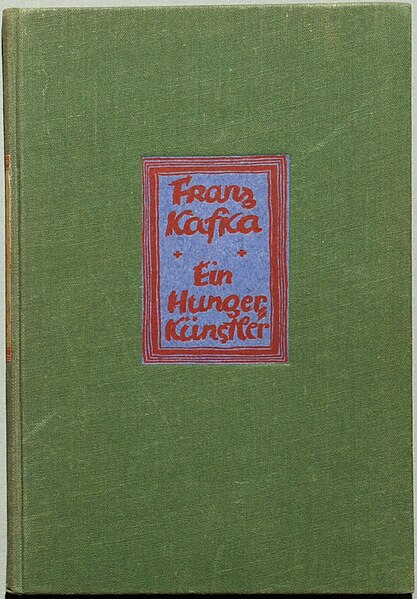"A Hunger Artist" is a short story by Franz Kafka first published in Die neue Rundschau in 1922. The story was also included in the collection A Hunger Artist, the last book Kafka prepared for publication, which was printed by Verlag Die Schmiede shortly after his death. The protagonist, a hunger artist who experiences the decline in appreciation of his craft, is typically Kafkaesque: an individual marginalized and victimized by society at large. "A Hunger Artist" explores themes such as death, art, isolation, asceticism, spiritual poverty, futility, personal failure and the corruption of human relationships. The title of the story has also been translated as "A Fasting Artist" and "A Starvation Artist".
1924 edition
Franz Kafka was a German-speaking Bohemian Jewish novelist and writer from Prague. He is widely regarded as one of the major figures of 20th-century literature. His work fuses elements of realism and the fantastic. It typically features isolated protagonists facing bizarre or surrealistic predicaments and incomprehensible socio-bureaucratic powers. It has been interpreted as exploring themes of alienation, existential anxiety, guilt, and absurdity. His best known works include the novella The Metamorphosis and novels The Trial and The Castle. The term Kafkaesque has entered English to describe absurd situations like those depicted in his writing.
Kafka in 1923
Franz Kafka's sisters as children, from the left Valli, Elli, Ottla
Kinský Palace where Kafka attended gymnasium and his father owned a shop
Former home of the Worker's Accident Insurance Institute





